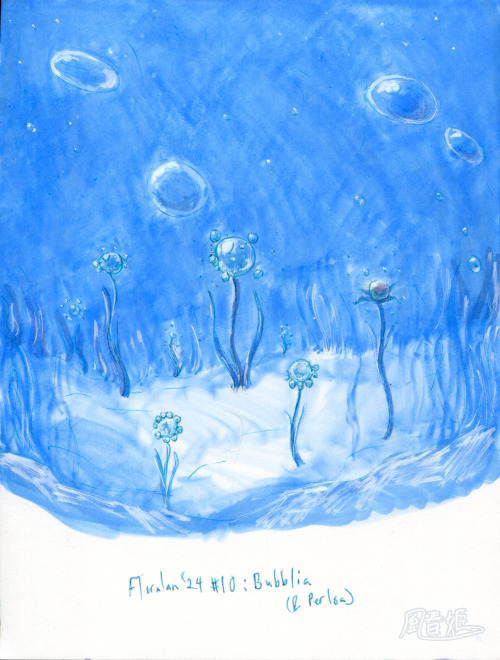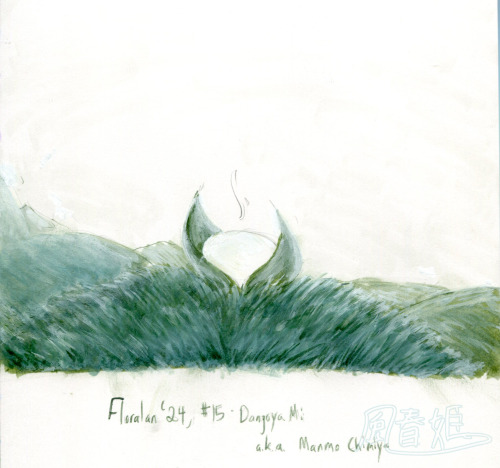JI Dimensions - Tumblr Posts



Taking a bit of a left turn on the usual formula since I'm running low on traditional plants in the compendium (theoretically still have enough to make it through, but motivation towards those remaining is low).
Haven't talked a whole lot about Buddys (tis the species name so funny spelling) here lately, so a lot of this info may come out of left-field or be hard to contextualize, but here goes.
Flower Buddy Lilypods
Also known by their more scientific name, Flowering Amicans, Flower Buddys are a unique species of Buddy that are born from Lilypods, as featured here. As they're an accessory to Flower Buddys themselves, Lilypods deviate from the traditional model of flora categorization quite a bit, and as such aren't typically listed in flora compendiums. Nevertheless, seeing as they are very much like flora, they could be counted in an annex of an extended compendium in theory.
Lilypods are found naturally in the Flower Buddy Dimension. The first Flower Buddys grew there inside their Lilypods and emerged into the world proper along the coast of Reline Ah, where the Flower Buddy Dimension is connected to. Flower Buddys used to be a lot more outgoing, sailing to many different places on their Lilypads and sleeping in their pods at night. However, after the first Shadow Buddy War, the Flower Buddys retreated back to Fuline Ah and hid there for many years. Some millennia later, brave new Flower Buddys emerged from their dimension and began to explore again. Though there are thought to be others still living on the continent in seclusion, brave explorers are still few. Though they emerge now and then from their dimension, Flower Buddys are still scarcely seen worldwide in JI proper.
As for the Lilypods themselves, Lilypods can be manipulated by the Flower Buddy born from them and have two forms: Pod and Pad Form. Pod Form is featured above as is the Lilypod's default state. When Flower Buddys wish to use their Lilypods to sail without their natural reeds getting in the way, they can will the reeds to recede back into the center of the Lilypad. They can will the reeds back up when they wish to sleep or hibernate within their Lilypods, and can control the internal environment of the pod depending on if they want to sleep for a night or much longer.
Being an extradimensional plant, Lilypods' needs are quite different from a traditional plant's. They are sustained primarily by the dimension itself, sometimes even while outside it, though they may change to a darker shade of green and act a bit more 'sluggish' when apart from their home dimension. When in an environment suited to their needs, they can also rely on it for nutrition in a similar way that they do in their home dimension. They prefer a medium temperature, rich sediment, dispersed light, and for their roots to always be submerged in water. When any of these conditions are not met, they can rely on their connection to their home dimension to provide for them, but as mentioned before, may change appearance and act 'sluggish' by comparison depending on how out of their element they are.
Lilypods can only spawn in their home dimension, and do so independently of Flower Buddys themselves. Flower Buddys themselves bare children the normal Buddy way via Heartegg (though there is scarce documentation about this due to Flower Buddys' reclusive nature and dubious success rate, especially with non-plant species partners) and may select an empty Lilypod for their child to mature in back at the dimension. For this reason, Flower Buddys developed this way may or may not know who their parents are as they emerge from the Lilypod fully mature. That said, not all Flower Buddy pairings choose this method, or may only make use of it for the duration of fetal development, so some Flower Buddy hybrids may indeed be raised by their parents in a more traditional manner.
The Flower Buddy dimension itself is an expanse of water and mist with no discernible sun, though it may still have a day-night cycle that corresponds with JI's day-night cycle. Anything else in the dimension is constructed by Flower Buddys or whoever else has found their way there, typically Flower Buddy partners. There are no other known flora that grow there aside from Lilypods, though there are likely microorganisms and perhaps fish, but there has not been much research in that area as of yet.



Blua Elektraika
A flower found in the Bleuka Stormana Zone of the Storm Dimension. It grows only where lightning strikes blue, and lightning strikes themselves are thought to seed the ground there with Blua Elektraikas. Not much is known about these flowers at this time, as the Stormana Zones are usually found high in the air, only easily accessible to Electric Buddys that can withstand the storm and fly.

Klaudileria
An illusive relative of the Clusteria, the Klaudileria was first discovered in a cloud pocket at the gate between the Storm Dimension and Sky Buddy World. Since then, it has been surmised that the plant prefers to grow in areas like this where it will have more access to diffuse light than it would in the deeper, stormier parts of its home dimension.

Bubblia (& Perloa)
Directly adjoining the Storm Dimension from beneath, there appears to be a previously unknown area of air sea. The air is so thick here it acts similar to a low-density ocean.
The first species to be recorded in this new area is the Bubblia. It would appear that the plant's smaller bubbles move about the surface of its larger one.
In some specimens, these bubbles followed a strict ring pattern, gliding about the surface of the nucleus bubble as a whole with the angle of this movement changing at random intervals. Whether the bubbles move clockwise or counter-clockwise seems to be connected to the water-air currents, switching when there's a shift in the current.
In other, larger specimens, these satellite bubbles were observed to each have their own path, which like the previously documented specimens, only switched their clockwise/counter-clockwise direction when the air-water currents shifted.
The the first type of specimens have been dubbled Ringia Bubblias. These were observed to have smaller central bubbles than the larger specimens with freer satellites.
Whether Ringia Bubblias are their own separate species or merely a juvenile version of the larger specimen type is still a topic of much debate, as there has yet to be observed any juveniles behaving like the larger specimen type.
On the one hand, there has been no noticeable change in behavior pattern of the known Ringia Bubblia specimens since their initial discovery. This does not discredit the notion of a maturation event still being on the horizon for any one of them, nor does it negate the possibility that the larger specimens are genetically nonviable offshoots of the Ringia Bubblia species, as it has yet to be observed how these larger specimens reproduce.
On the other, there are many indicators that Ringia Bubblias are the descendants of the larger specimens and not the other way around. For one thing, the larger specimens show evidence of being much older than the Ringias. The large specimens often have a somewhat central position in their patch, and tend to only exist in the singular per patch. This would give credence to the idea that the Ringias are desendants.
However, it still does not explain the behavioral differences and the fact that no Ringia has been observed maturing into the larger specimen type.
One hypothesis states that the larger specimen type acts as a sort of a queen or ruler over the smaller Ringias. This would explain why there can only be one large specimen type per patch.
It is also hypothesized that each satellite bubble on the larger specimen type corresponds to the movement of a ring somewhere in the patch, but this has yet to be sufficiently backed up with evidence.
Other than these two primary specimens, there has been another feature observed in Bubblia patches, and that is the presence of one of a third type of specimen, the Perloa, in every patch.
Unlike the first two, Perloas do not appear to be too closely related to either specimen type. They grow an opaquer, solider sphere in lieu of bubble nucleus and appear to maintain petal-like bracts even after fruiting. No external flowers were observed in either of the two Bubblia specimen types, and the primary bubble in each one seemed to form almost in place of sepals just below the base of flowers. Bubblias are thought to be related to Aquabulla genus by various points of evidence, and it is currently hypothesized that Perloas may be a hybird of the Perloa Alnia and Yura Aquabulla based on its appearance. However, this is at best speculation, and it is not yet clear if there really is a direct connection between the two species, or if they merely bear a resemblance to both and have a more indirect connection to the Aquabullas, much less the Perloa Alnias.
The fruit of the Perloa is not thought to be edible, but from their shiny appearance, it is thought they could become a collector's item in the future. This difference in taste is sometimes brought up as an argument against their being closely related to the Perloa Alnia, despite them both sharing the word "Perloa" in their name.

Amanomi Noyabu
In addition to the Air Sea, a type of rain forest was also discovered deep down in the Storm Dimension's cloud layer. The primary specimen we'll be observing is the Amanomi Noyabu, otherwise known as the Wild Rainberry Bush. The berries in question are only faintly sweet and dye the mouth dark blue when eaten, leading to it also being named the Inkberry Rainbush, or Suminomi Amayabu. Its ink-like qualities may mean Inkpetal Dyenas will soon have a rival on the market for ink and dyeing products.

Dangoya Mi a.k.a. Manmo Chimiya
Deeper exploration of the Reline Ah dimension (otherwise known as the Flower Buddy dimension) has revealed the existence of a misty land heated by geothermal heat on the border between it and the Fire Dimension. One plant that thrives here is the Dangoya Mi, or Manmo Chimiya. Its fruit, warmed by the ground, is piping hot and has a sticky consistency like that of a rice cake. When dried and fired, it can be drawn on, and residents of the land have been seen using them as decorations that way. As its taste is also similar to a sticky rice cake, it can be enjoyed as a savory item as well. The leaves that grow sheltering the fruit prove to be an artful decoration whether for use in serving or framing the dried fruit.